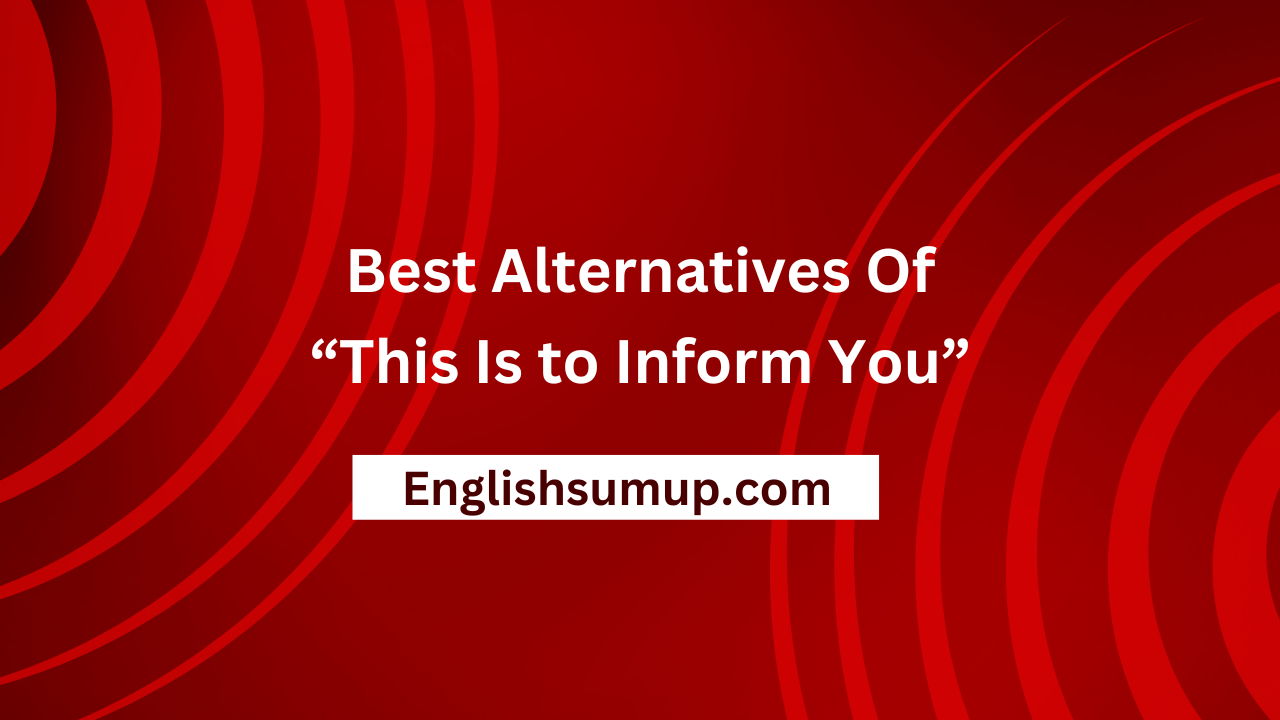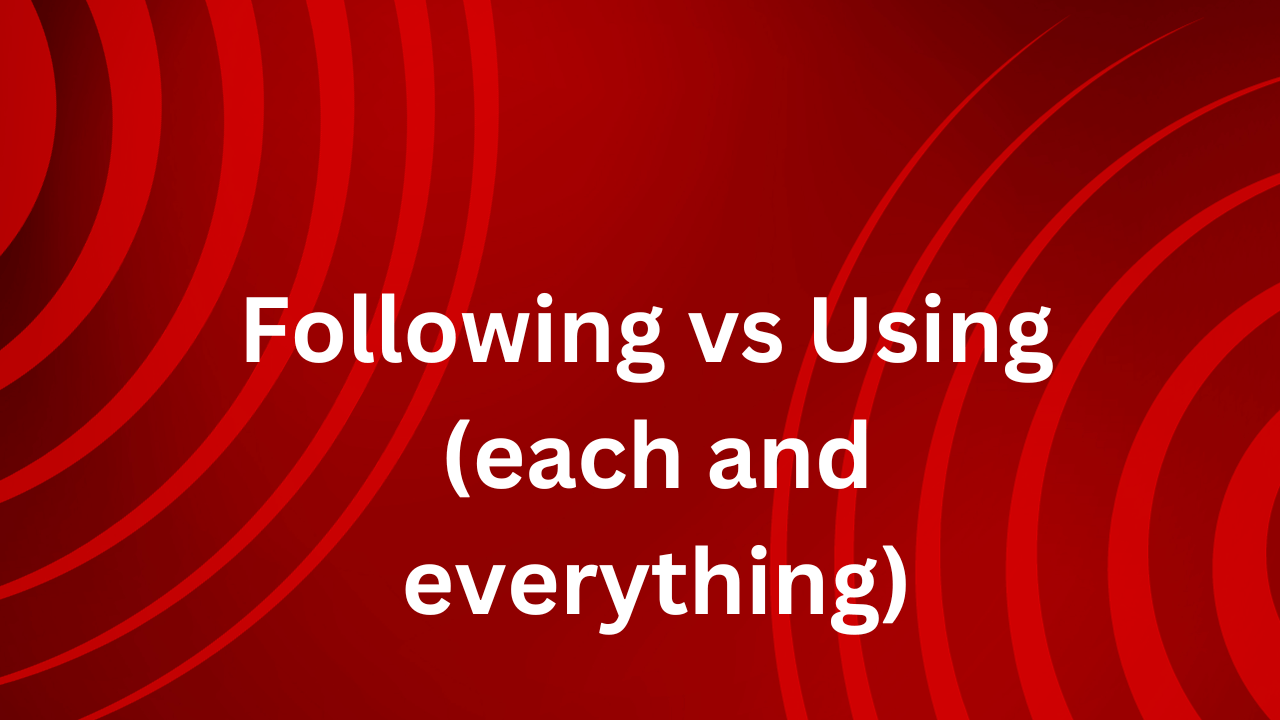Navigating the nuances of professional communication can be a delicate task, especially when initiating an email with the common phrase “this is to inform you.” If you find yourself questioning the professionalism of your choice, fret not, as this guide is tailored to address your concerns.
This article is designed to provide insights into crafting emails that convey information effectively in professional contexts. From choosing the right tone to structuring your message for maximum impact, we’ll delve into the intricacies of writing informative emails that leave a positive impression.
Is It Professional to Say “This Is to Inform You”?
The phrase “This is to inform you” is recognized as a professional and acceptable introduction when composing formal emails. It serves as a direct and courteous way to convey important information concisely, signaling the significance of the message without unnecessary elaboration.
Pros:
Emphasis on Importance: It effectively highlights the significance of the information being conveyed.
Professional and Polite: The phrase maintains a high level of professionalism and politeness in formal communication.
Cons:
Redundancy: Some may find it slightly redundant, as its removal often does not hinder the overall clarity of the email.
Impersonal: The phrase tends to carry a formal and impersonal tone, making it less suitable for informal contexts.
While “This is to inform you” is undoubtedly a professional choice, its redundancy and impersonal nature prompt exploration into synonyms that can add variety to your writing. Exploring alternatives is not only a way to enhance your writing style but also ensures you have a repertoire of formal phrases at your disposal.
Read further to discover ten professional alternatives to “This is to inform you,” offering you a diverse selection of expressions for different formal scenarios. This practice will equip you with a versatile toolkit to elevate your formal communication.
What’s Another Way to Say “This Is to Inform You”?
- I am reaching out to communicate that
- I wanted to bring to your attention that
- This correspondence aims to apprise you of
- Kindly be advised that
- I am taking a moment to update you on
- The intention of this email is to make you aware that
- I would like to inform you that
- It is my duty to inform you that
- To keep you informed
- This communication is to keep you abreast of
- I thought it important to let you know that
“I am reaching out to communicate that”
This phrase conveys a formal and proactive approach to communication. It signifies a deliberate effort to share information and suggests openness for further discussion or clarification. Isn’t this better than “This Is to Inform You”.
Sub: Important Update
Dear John,
I hope this email finds you well. I am reaching out to communicate that (specific details). Your attention to this matter is appreciated, and I am open to discussing any questions or concerns you may have.
Thank you for your time.
Best regards,
Devon
I wanted to bring to your attention that
This expression implies a sense of personal responsibility to inform the recipient about something important. It adds a touch of urgency, suggesting that the information requires immediate consideration. Isn’t this better than “This Is to Inform You”.
Sub: Urgent: Information Update
Dear John,
I trust you are well. I wanted to bring to your attention that (specific details). Your prompt consideration of this matter is highly appreciated.
Thank you for your attention.
Warm regards,
Devon
This correspondence aims to apprise you of
This formal phrase emphasizes the purpose of the email as an informative update. It carries a sense of responsibility in providing the recipient with relevant information. Isn’t this better than “This Is to Inform You”.
Sub: Urgent Notification
Dear John,
I trust this message finds you in good health. This correspondence aims to apprise you of (specific details). Should you require further clarification or discussion, please feel free to reach out.
Sincerely,
Devon
Kindly be advised that
This phrase communicates information with a directive tone, implying a need for the recipient to take note and act accordingly. It carries a sense of formality and importance. Isn’t this better than “This Is to Inform You”.
Sub: Advisory
Dear John,
Kindly be advised that (specific details). Your attention to this matter is crucial, and if you have any questions, please don’t hesitate to contact me.
Regards,
Devon
I am taking a moment to update you on
This phrase suggests a deliberate and thoughtful approach to communication. It conveys the sender’s commitment to keeping the recipient informed and updated. Isn’t this better than “This Is to Inform You”.
Sub: Information Update
Dear John,
I hope this email finds you well. I am taking a moment to update you on (specific details). Your awareness of this information is appreciated, and should you have any queries, feel free to reach out.
Best regards,
Devon
The intention of this email is to make you aware that
This phrase explicitly states the purpose of the email, emphasizing the sender’s intention to inform and raise awareness. It adds transparency to the communication. Isn’t this better than “This Is to Inform You”.
Sub: Intent: Awareness Notification
Dear John,
I trust you are doing well. The intention of this email is to make you aware that (specific details). Your attention to this matter is valued, and should you need further information, please feel free to ask.
Sincerely,
Devon
I would like to inform you that
This straightforward phrase conveys a polite and direct approach to providing information. It maintains a balance between formality and clarity. Isn’t this better than “This Is to Inform You”.
Sub: Urgent Notification
Dear John,
I hope this message finds you in good spirits. I would like to inform you that (specific details). Your understanding and attention to this matter are appreciated.
Best regards,
Devon
It is my duty to inform you that
This phrase imparts a sense of responsibility and obligation on the part of the sender to share crucial information. It emphasizes the importance of the content. Isn’t this better than “This Is to Inform You”.
Sub: Duty Notification
Dear John,
It is my duty to inform you that {specific details}. Your prompt acknowledgment of this information is crucial, and should you have any questions, feel free to reach out.
Regards,
Devon
To keep you informed
This succinct phrase conveys a commitment to keeping the recipient updated. It suggests an ongoing flow of information and encourages an open line of communication. Isn’t this better than “This Is to Inform You”.
Sub: Keeping You Informed
Dear John,
I trust this email finds you well. To keep you informed, {specific details}. Your ongoing awareness of developments is valued, and should you wish to discuss further, I am available.
Best regards,
Devon
This communication is to keep you abreast of
This phrase conveys a sense of contemporaneity, emphasizing the up-to-date nature of the information being shared. It suggests a proactive effort to keep the recipient well-informed. Isn’t this better than “This Is to Inform You”.
Sub: Keeping You Abreast
Dear John,
This communication is to keep you abreast of {specific details}. Your awareness of recent developments is crucial, and I am available for any further discussion or clarification you may require.
Warm regards,
Devon
I thought it important to let you know that
This phrase adds a personal touch, indicating that the sender has considered the information important enough to share. It conveys a sense of consideration for the recipient’s awareness. Isn’t this better than “This Is to Inform You”.
Sub: Important Notification
Dear John,
I trust this message finds you well. I thought it important to let you know that {specific details}. Your attention to this matter is appreciated, and if you have any questions, feel free to reach out.
Sincerely,
Devon
Conclusion:
In conclusion, while the traditional phrase “This Is to Inform You” has long been recognized as a formal and acceptable opening in professional communication, the diverse alternatives presented here provide a spectrum of expressions to enhance and personalize your messaging.
Understanding when to deploy each phrase is essential, as it ensures your emails strike the right tone for various formal scenarios.
The phrase “This Is to Inform You” serves its purpose effectively, emphasizing the importance of the information being conveyed in a concise and courteous manner.
However, acknowledging its slight redundancy and impersonal nature, exploring alternatives becomes a valuable practice in refining one’s communication toolkit.
By incorporating these alternatives into your email repertoire, you not only inject variety into your writing but also cater to different levels of formality and engagement.
Whether you opt for a directive “Kindly be advised that” or choose a more proactive “I am reaching out to communicate that,” each phrase contributes to the nuanced art of professional communication.
In the dynamic landscape of formal correspondence, the adaptability and versatility of language play a crucial role.
Therefore, having a collection of phrases beyond the traditional “This Is to Inform You” ensures that your communication remains fresh, engaging, and tailored to the specific needs of each interaction.
In essence, while “This Is to Inform You” remains a stalwart in formal emails, the exploration of alternatives serves as a strategic endeavor to elevate your communication style and meet the demands of diverse professional contexts.
So, the next time you draft an informative email, consider the array of alternatives provided, ensuring your message is not only clear and concise but also resonates with a touch of personalized professionalism.










